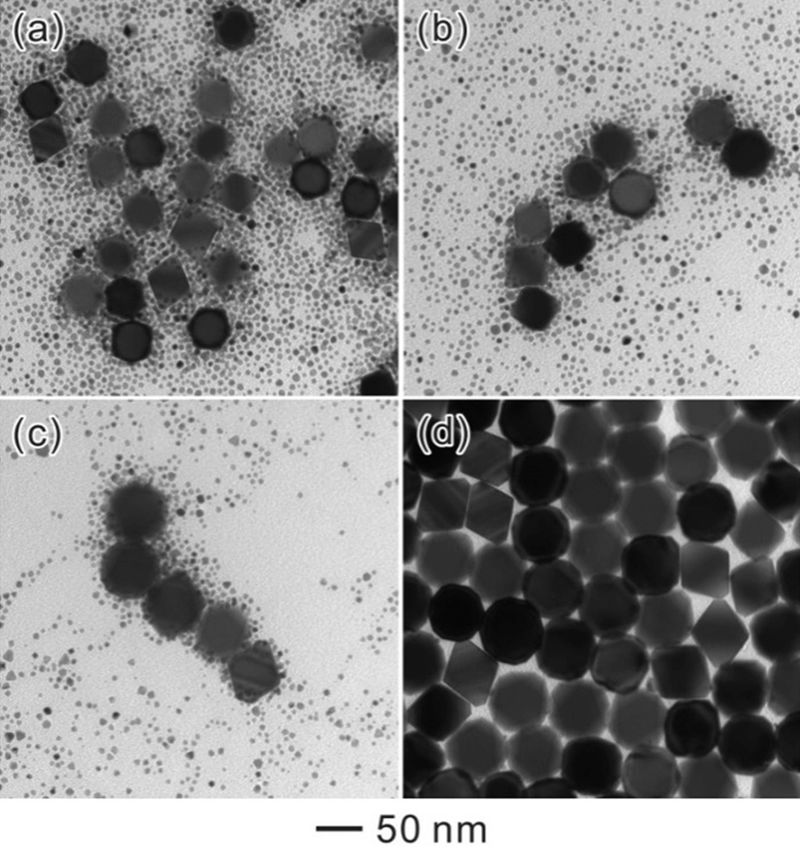The key difference between coalescence and Ostwald ripening is that in coalescence, small masses combine to form a large mass. But, in Ostwald ripening, small particles dissolve in a solution and redeposit to form large masses.
Both coalescence and Ostwald ripening describe the formation of large masses from small masses; for example, the formation of large crystals from small particles. These small masses combine with each other in a covalent manner so that the bonding between the particles is very high, which makes a stable large mass.
CONTENTS
1. Overview and Key Difference
2. What is Coalescence
3. What is Ostwald Ripening
4. Side by Side Comparison – Coalescence vs Ostwald Ripening in Tabular Form
5. Summary
What is Coalescence?
Coalescence is a process in which some small masses combine with each other to form a large mass. These small masses can be droplets, bubbles, particles, etc. They tend to merge upon contacting and forms a single droplet or particle or bubble. Also, this reaction can take place in a wide variety of processes, including the formation of raindrops and star formation.

Figure 01: Coalescence – Combination of Two Bubbles to Form a Large Bubble
Coalescence is very important in the formation of rain because, in a cloud, the rain droplets are carried by updrafts and downdrafts. It makes the droplets collide with each other. Therefore, large rain droplets are formed. Once these droplets become too large for the cloud to hold them, the large droplets begin to fall in the form of rain. The reason for the collision of the droplets is their different velocities. Besides, droplet concentration in clouds and turbulence also affect the coalescence of small rain droplets.
What is Ostwald Ripening?
Ostwald ripening is the process of dissolving and re-depositing particles. Therefore, it describes the change of inhomogeneous systems with time. We can observe this phenomenon in solid solutions or liquid sols, i.e. water-oil emulsions. The scientist, Wilhelm Ostwald, first described this dissolution and re-deposition process so it was named after him.

Figure 02: Ostwald Ripening in Nanoparticles
The major reason for this process is that large particles are thermodynamically more favoured than small particles. Due to the same reason, this Ostwald ripening process is a spontaneous process. Recrystallization of water within ice cream is an example of this process; large ice crystals grow within the ice cream from the combination of small ice crystals. This creates a coarse texture. Similarly, this process can occur in emulsion systems. Here, molecules tend to move from small droplets to large droplets.
What is the Difference Between Coalescence and Ostwald Ripening?
Both coalescence and Ostwald ripening describe the formation of large masses from small masses. The key difference between coalescence and Ostwald ripening is that in coalescence, small masses combine to form a large mass whereas, in Ostwald ripening, small particles dissolve in a solution and redeposit to form large masses.
For example, coalescence causes the rainfall by combining the small water droplets with each other, forming large raindrops, whereas Ostwald ripening causes the water recrystallization within the ice cream. In the coalescence process, only the formation of large mass is described but in Ostwald ripening, both the dissolution of small masses and formation of large masses are described.
Below infographic summarizes the difference between coalescence and Ostwald ripening.

Summary – Coalescence vs Ostwald Ripening
Both coalescence and Ostwald ripening describe the formation of large masses from small masses. However, the key difference between coalescence and Ostwald ripening is that in coalescence, small masses combine to form a large mass whereas, in Ostwald ripening, small particles dissolve in a solution and redeposit to form large masses.
Reference:
1. “Coalescence (Physics).” Wikipedia, Wikimedia Foundation, 11 Sept. 2019, Available here.
2. “Ostwald Ripening.” Wikipedia, Wikimedia Foundation, 18 Aug. 2019, Available here.
Image Courtesy:
1. “Coalescence” By Cgay – Own work (CC BY-SA 3.0) via Commons Wikimedia
2. “TEM of Ostwald ripening in Pd nanoparticles” By Zhaorui Zhang et al. – (CC BY 3.0) via Commons Wikimedia
ncG1vNJzZmivp6x7pbXFn5yrnZ6YsqOx07CcnqZemLyue8OinZ%2Bdopq7pLGMm5ytr5Wau26vzpqjnquTmruksYyapZ1ln6jBuK3LnWSroaCau6q6xmg%3D